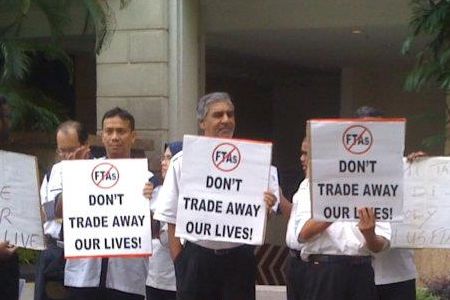Harmonising IP laws across ASEAN: Is it possible?

Today Online | 3 March 2016
Harmonising IP laws across ASEAN: Is it possible?
By Chew Phye Keat
The establishment of the ASEAN Economic Community last December aims to transform this region of over 600 million into an Asian powerhouse, with free movement of goods, services, and skilled labour. This economic integration, however, leads to many challenges in the harmonisation of trade-related laws across ASEAN’s 10 member nations.
One is consumer protection and competition laws, also known as fair trade laws. The other is intellectual property (IP) laws.
There is no denying that the protection of fair trade and IP is essential to any successful business or investment venture. It could be said that fair trade issues are more easily conceptualised as the set of rules governing them is rather static and in a “plug and play” format with uniform laws which can be easily borrowed as a standard template.
IP is, however, a different kettle of fish and needs constant calibration in legislation. IP covers patents, trademarks, copyright and trade secrets.
For one, IP is never static. New technology keeps emerging that tests the boundaries of IP laws. Just take the Internet as an example. Traditional trademark and copyright laws are becoming irrelevant as protected brands and copyright works are copied, reproduced and distributed almost instantaneously worldwide through the internet without the perpetrator ever being identified. The laws also seem powerless to deal with internet service providers which are clueless that their infrastructure are being used for IP infringing activities.
Apart from keeping pace with technology, IP faces different problems within ASEAN – in particular the lack of standardisation and enforcement across the region which is made up of countries in different stages of development.
This means businesses and individuals cannot expect the same level of IP protection within ASEAN.
While all ASEAN countries are members of the World Trade Organization (WTO) and are required to comply with the Agreement on Trade-Related Aspects of Intellectual Property Rights (TRIPS) - which sets minimum standards of IP protection and enforcement standards - the IP infrastructure varies significantly among ASEAN countries. It ranges from sophisticated legal frameworks such as those in Singapore, to almost absent legislation in Myanmar.
In global IP rankings, Singapore typically emerges among the top 5 to 10 of countries with good IP protection. Malaysia is a distant second, followed by Brunei and lagging far behind are countries such as Thailand, Indonesia, Philippines and Thailand. The countries with the weakest IP protection are Cambodia, Laos and Myanmar.
The number one IP culprit within ASEAN is counterfeiting. Thailand, Vietnam and Indonesia are said to be the manufacturing source, although most goods are still imported from China. Singapore is viewed as a small market for counterfeits, but as a critical port receiving many goods from China, it reportedly serves as an entry or transit point for counterfeit goods, according to a publication by the Asean IPR SME Helpdesk guide which provides advice to European companies investing in ASEAN.
Given these issues, can IP laws be harmonised across ASEAN?
A look at the ASEAN IP Action Plan 2011 to 2015 signals that harmonisation may not be realistic at this moment. The plan had five strategic goals such as having a balanced IP system that takes into account the varying levels of development among member countries, participation of ASEAN countries in global IP systems at the appropriate time and systematic promotion of IP awareness and utilisation.
The updated ASEAN IP Action plan for 2016-2025 has been finalised, with some indication of standardisation such as developing regional IP platforms like online filing systems for trademarks, and creating an inclusive IP ecosystem.
But it would be tough to have a one size fits all structure.
One reason is because IP faces challenges such as the concerns of developing economies which are at odds with those in more developed economies.
Developing countries are concerned that a strict IP regime can retard innovation within their economies as IP of the developed countries continue to be protected well past what used to be their expiry timelines.
A clear example would be the increase of the copyright period from life of author plus 50 years to life of author plus 70 years. This means that free access to use and reproduce that copyright protected work and innovate further is now delayed by another 20 years. Perhaps the question here is how long is considered long enough.
Public health is another interesting case in point. Legislation on plain packaging for tobacco products which effectively nullifies the trademarks of tobacco companies is being proposed in many countries and expected soon to be considered by ASEAN members. The issue is now pending before the WTO dispute resolution process and its outcome will have a major impact for brand owners in ASEAN.
So ASEAN needs to define for itself, as a community of largely developing economies, what is good for IP in the region. Even if an emerging global trend begins to gain traction, it does not mean ASEAN has to fall in line. The regional grouping needs to be clear on its economic agenda and clearly map out where IP fits in and how to manage the pressure to conform to global standards.
In this regard, ASEAN governments need to listen to feedback from the private sector on proposed initiatives, and in particular new IP laws being proposed.
While having one set of IP rules and procedures can show ASEAN’s solidarity, diversity is also the regional bloc’s strength. Member countries would need to find a balance between both as its economies further integrate.





